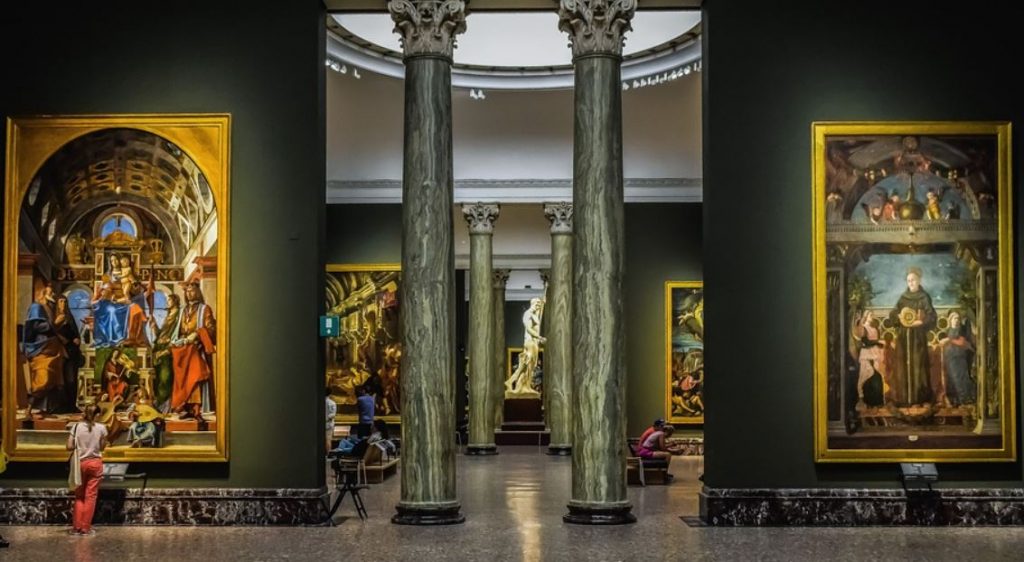One of the most influential Renaissance artists in history was declared a master in the year 1500. Raffaello Sanzio da Urbino (1483-1520) was only 17 years old at the time and was about to exceed his teacher’s level of skill shortly after.
This doesn’t mean that he wasn’t still under the influence of Pietro Perugino (1446-1523), and this becomes very clear in a painting known as “The Marriage of the Virgin,” one of Raphael’s masterpieces of the early 16th century.
1. It was commissioned for a church in a small city in Central Italy
The painting, also known as “Lo Sposalizio,” was completed by Raphael in the year 1504 and was commissioned by the patrons of a Franciscan church.
This church is located in the small city of “Città di Castello” which is located in the province of Perugia in the northern part of Umbria.
This city is situated in a mountainous area in the center of the country and somewhere in between the larger cities of Perugia and Florence.
The hometown of Raphael, Urbino, isn’t too far away as well as it’s situated just to the northeast of this city.
Raphael painted multiple works for churches in this city during this period in the early 16th century.
The Marriage of the Virgin is definitely the most sophisticated of these and originally decorated the San Francesco church in Città di Castello as its altarpiece.
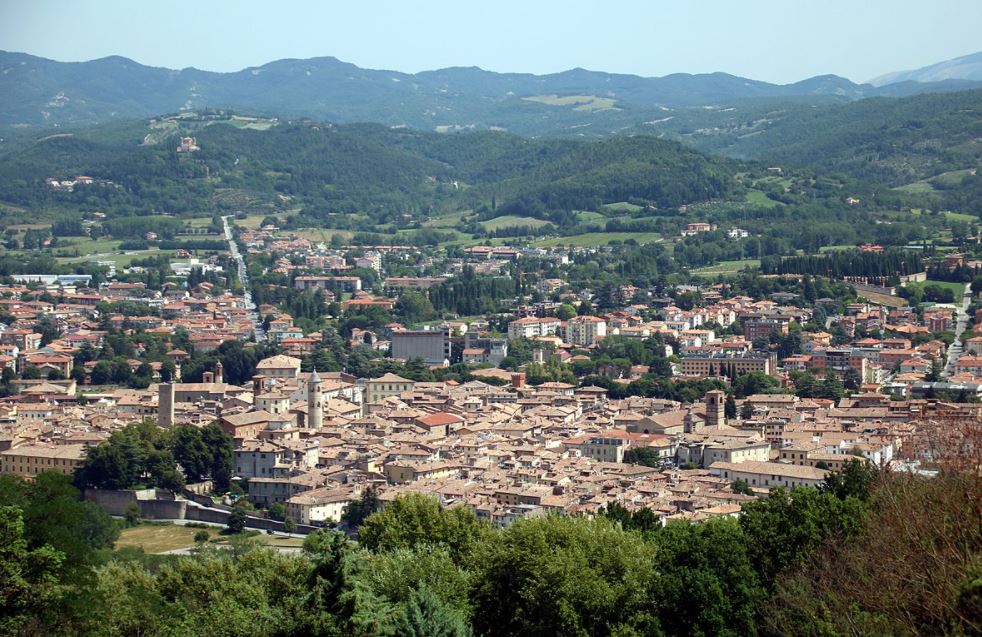
2. It depicts a popular theme in Christian art
The wedding of the Virgin Mary and Saint Joseph has been a popular theme in Christian art. This is remarkable because it isn’t mentioned in the Gospels.
It was, however, part of the so-called “Golden Legend,” biographies of saints that were popular in late-Medieval Europe. It’s assumed these texts were completed somewhere between 1259 and 1266.
This theme was also often part of entire cycles of paintings depicting various scenes in the life of the Virgin Mary.
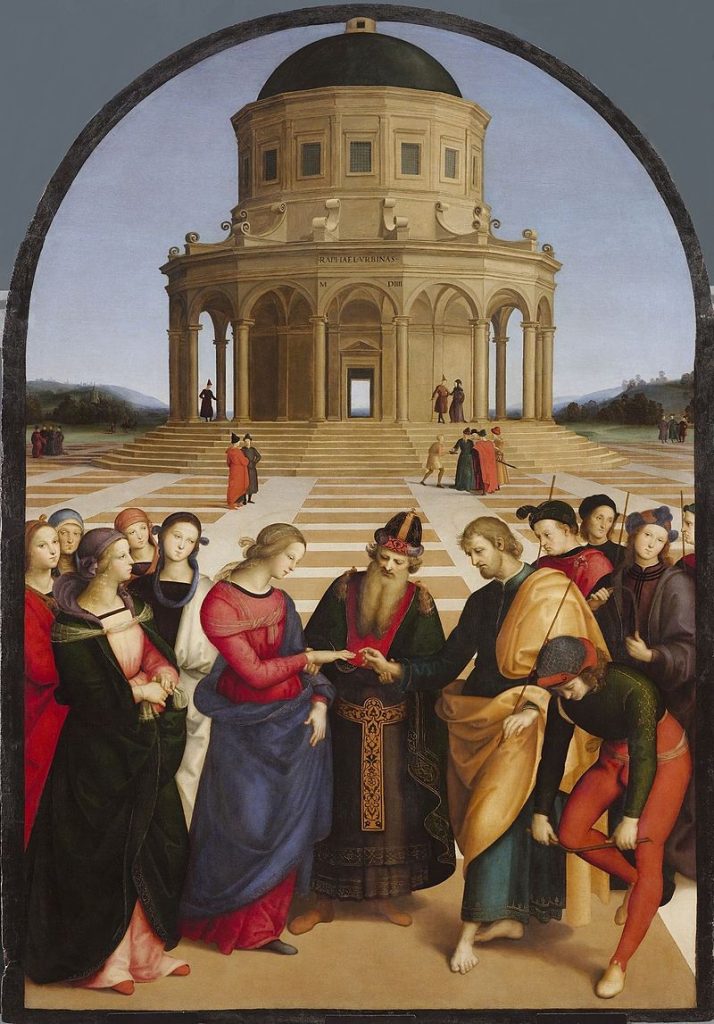
3. The temple most probably depicts a famous structure in Jerusalem
One of the most fascinating elements of this painting is the level of detail used by Raphael to depict the domed structure in the background.
Renowned art biographer Giorgio Vasari wrote about this:
There is a temple drawn in perspective with such evident care that it is marvelous to behold the difficulty of the problems which he has there set himself to solve.
This structure supposedly depicts the Temple of Jerusalem, and many art historians agree that it’s the Renaissance version of the Dome of the Rock.
Even though this iconic structure on Temple Mount with its golden dome is a 7th-century Islamic shrine today, it’s here that the “First Temple” or the “Temple of Solomon” once stood.
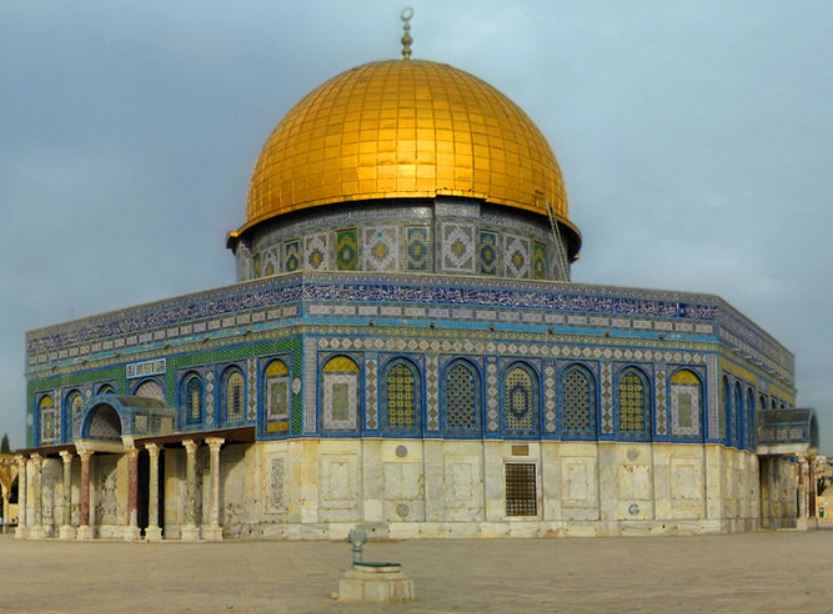
4. Raphael was influenced by a similar painting created by his teacher
The fact that Raphael exceeded the level of skill of his own teacher Pietro Perugino is very evident in this work. That’s because his master created a painting of the same theme just before he completed this painting in 1504.
This painting, also known as “The Marriage of the Virgin” by Pietro Perugino, was started in 1499 but was not completed until December 26, 1503.
When looking at Perugino’s version of the same theme, it becomes clear that the pupil’s version was heavily influenced by that of his teacher, but as mentioned, definitely comes across as an improved version of the work.
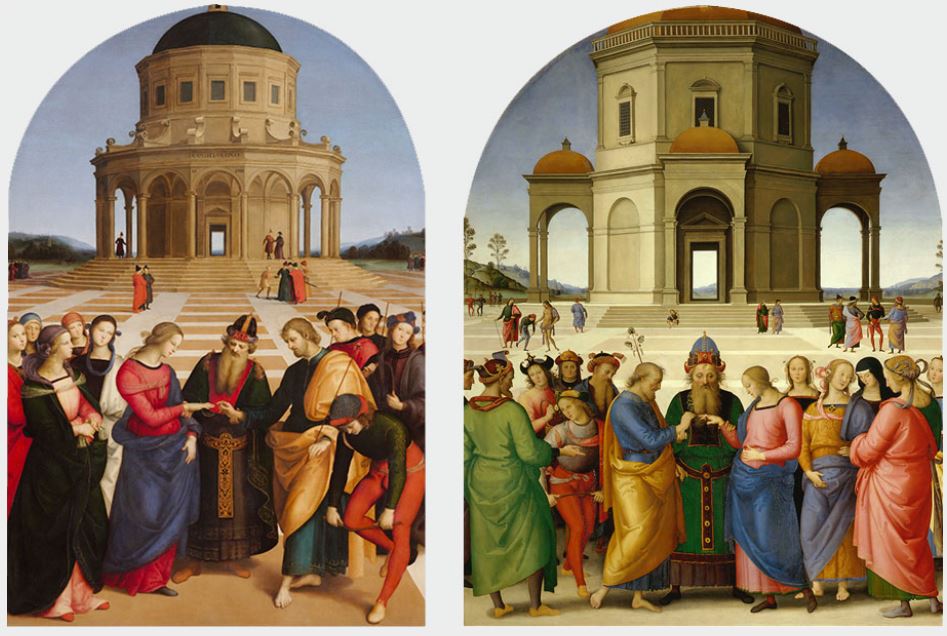
5. The painting can be admired in a popular art gallery in Milan
The history of this particular painting has been quite rocky, that’s for sure which resulted in the painting being heavily damaged.
The copious amounts of cracks and overall bowing and rippling of the painting as a result of the moving were restored for the first time in the 19th century.
This initial restoration was conducted in 1857 by Italian painter Giuseppe Molteni who chose to preserve the panel instead of moving it to canvas.
Because of this deliberate attempt to preserve the painting as much as possible, it still appears to be “somewhat discolored,” but very authentic as well.
Today, the painting is part of the extensive collection of the Pinacoteca di Brera Museum in Milan, the second-largest city in Italy, and has been for well over 200 years since 1806.
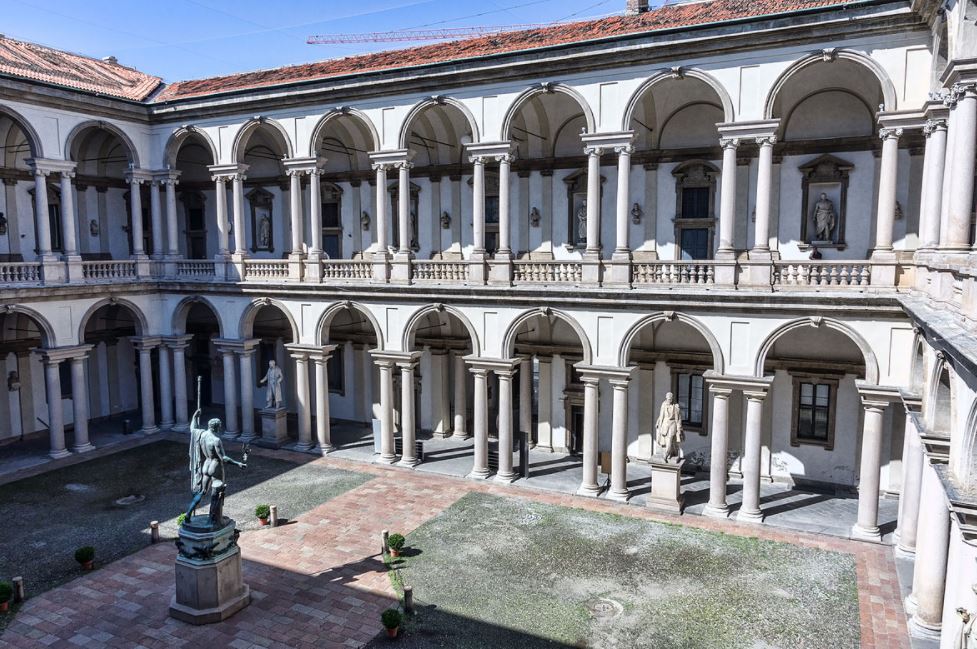
More interesting facts about the Marriage of the Virgin by Raphael
6. The work was originally commissioned in the late 15th century and was one of three works ordered by a man named Filippo degli Albezzini, one of the patrons in the city of Città di Castello.
What’s remarkable is that these commissions weren’t addressed to Raphael but to his master Pietro Perugino. Because Raphael’s teacher wasn’t present at the time, Raphael completed the work.
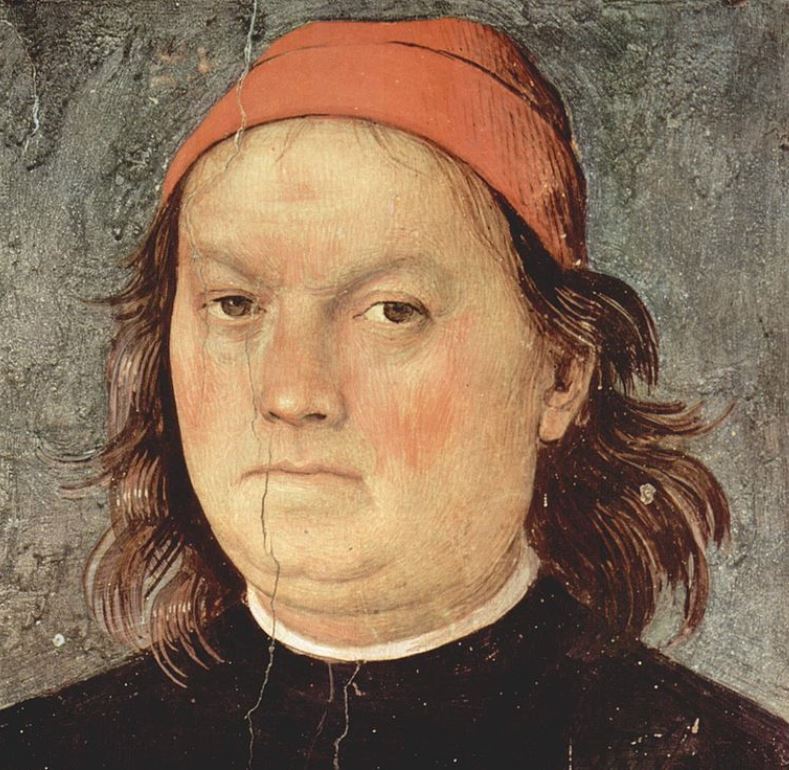
7. The painting is relatively large so the level of detail used by Raphael is quite astonishing. It has dimensions of 174 × 121 centimeters (69 × 48 inches).
8. Raphael placed his signature, “Raphael Vrbinas,” right above the central portico of the structure in the background. He also added the date in Roman numerals so we know for sure the work was completed in 1504.
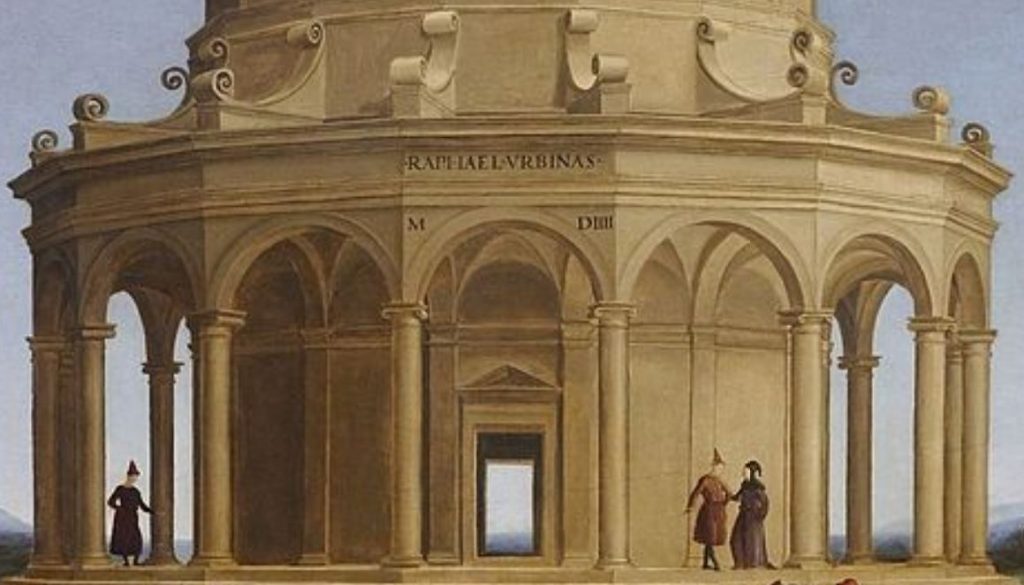
9. Even though the painting is located in the Pinacoteca di Brera today, it spent a lot more time in the church dedicated to Saint Francis in Città di Castello.
It hung there from its completion in 1504 until Giuseppe Lechi (1766-1836) freed the city from Austrian occupation during the Napoleonic Wars.
He pretty much “claimed” the highly regarded painting, even though it was officially marked as a “donation by the city council.”
10. The exact details of the continuous moves of the painting remain a bit obscure, but it’s assumed that Lechi ended up selling the painting in 1801.
The man who bought it, a man named “Giacomo Sannazaro,” sold it to the Ospedale Maggiore in Milan which subsequently sold it to the Italian State for 53,000 francs.
This is how it eventually ended in the collection of the Pinacoteca di Brera and why we can admire this fascinating work in this great art gallery in Milan today.
